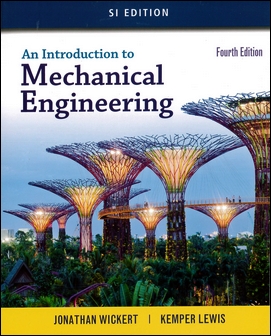書籍分類

An Introduction to Mechanical Engineering 4/e (SI Edition)
作者:Jonathan Wickert, Kemper Lewis
原價:NT$ 1,280
ISBN:9781305635753
版次:4
年份:2017
出版商:Cengage Learning
頁數/規格:397頁/平裝彩色
參考網頁:An Introduction to Mechanical Engineering 4/e
版次:4
年份:2017
出版商:Cengage Learning
頁數/規格:397頁/平裝彩色
參考網頁:An Introduction to Mechanical Engineering 4/e
內容介紹 本書特色 目錄 作者介紹
- Description
Gain insight into today's ever-emerging field of mechanical engineering as you develop an appreciation for how engineers design the hardware that builds and improves societies around the world. AN INTRODUCTION TO MECHANICAL ENGINEERING, 4E is an ideal resource during your first or second year of your mechanical engineering program. It's also a useful tool if you are pursuing a closely related field. The book balances timely treatments of technical problem-solving skills, design, engineering analysis, and modern technology to provide the solid mechanical engineering foundation you need for future success.
分類位置:
理工 > 機械工程 > 機械工程


